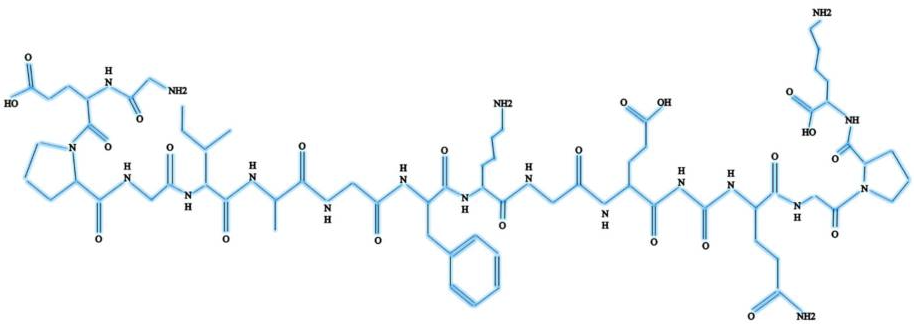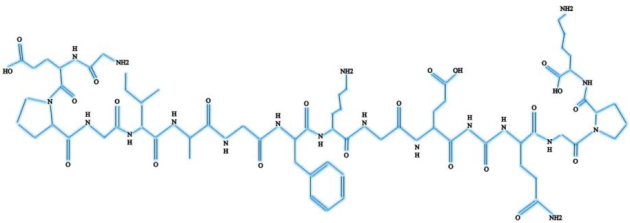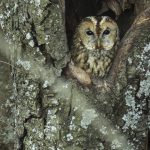
If you are looking for an illustration of a bird skeleton, look elsewhere. This post is about the chemical composition of bird bones, the difference in chemical composition from mammal bones, and the rationale behind those differences.
In both birds and mammals, bones are a composite material, which means they are made from several different materials, namely:
1. A mineral phase (inorganic) – this is mostly hydroxyapatite, a calcium hydroxy phosphate with the formula Ca10(PO4)6(OH)2. Some of the atoms and ions in the formula may be partly substituted by others, such as carbonate, sodium, magnesium, or fluoride.
2. An organic matrix – this is mostly type 1 collagen (about 90%) along with some non-collagen proteins with names sounding like Italian villages (osteocalcin, osteopontin).
Type 1 Collagen

3. Water – both in the gaps between the other two materials and bound to them.
The difference between bird and mammal bones is in the relative ratio of these three components. In mammals, the mineral phase accounts for 60-65% of the weight, followed by 20-25% for the organic component and 10-15% for water. In birds, the inorganic content is higher at 70-75% while the organic component accounts for a correspondingly smaller share.
What does that mean? Generally, in composite materials, the different components contribute different properties – and the ratio of the components then determines the properties of the composite material.
The inorganic part, which can almost be compared to a rock (in fact, hydroxapatite is a mineral), is stiff and brittle. Having a higher share of a stiffer material allows birds to use only thin bone walls and thus to save on overall weight, but they sacrifice flexibility, which comes from the collagen part.
In addition, the hydroxyapatite in the bones of birds has a higher degree of substitution with carbonate. Higher carbonate substitution makes bone mineral less crystalline, more soluble, and easier to remodel, but at the cost of mechanical brittleness.
Finally, the chemical composition of bird bones differs from that of mammals in the concentration of some trace elements, such as magnesium, strontium, and zinc.
Other differences have less to do with the chemical composition but with other adaptations for flight. For example, many bird bones are hollow and include air sacs.
Illustration: Ruth Naomi, Pauzi Ridzuan, and Hasnah Bahari













Evolution at its best: same building blocks differently arranged, and hey presto!